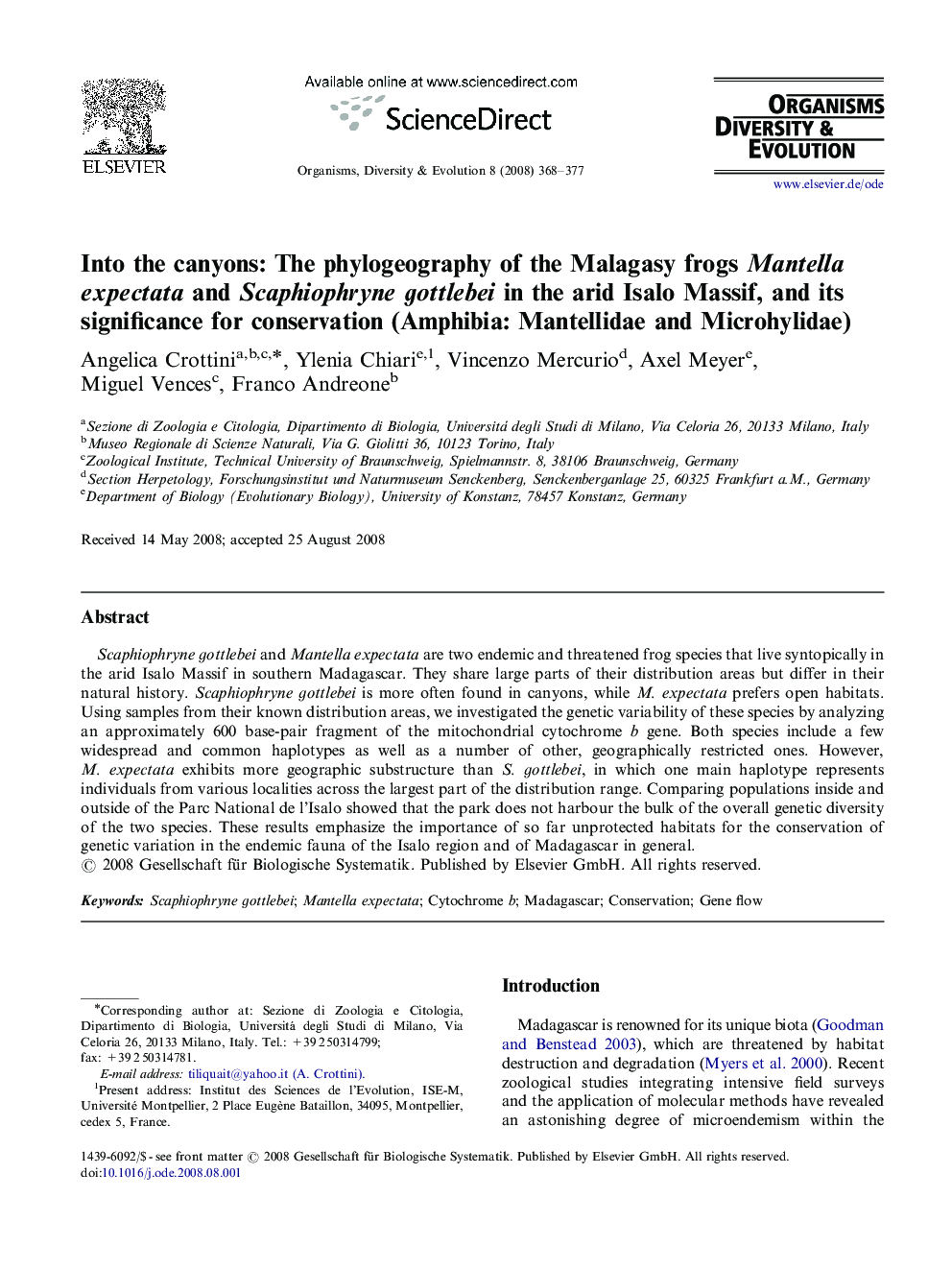| کد مقاله | کد نشریه | سال انتشار | مقاله انگلیسی | نسخه تمام متن |
|---|---|---|---|---|
| 4458639 | 1620986 | 2008 | 10 صفحه PDF | دانلود رایگان |

Scaphiophryne gottlebei and Mantella expectata are two endemic and threatened frog species that live syntopically in the arid Isalo Massif in southern Madagascar. They share large parts of their distribution areas but differ in their natural history. Scaphiophryne gottlebei is more often found in canyons, while M. expectata prefers open habitats. Using samples from their known distribution areas, we investigated the genetic variability of these species by analyzing an approximately 600 base-pair fragment of the mitochondrial cytochrome b gene. Both species include a few widespread and common haplotypes as well as a number of other, geographically restricted ones. However, M. expectata exhibits more geographic substructure than S. gottlebei, in which one main haplotype represents individuals from various localities across the largest part of the distribution range. Comparing populations inside and outside of the Parc National de l’Isalo showed that the park does not harbour the bulk of the overall genetic diversity of the two species. These results emphasize the importance of so far unprotected habitats for the conservation of genetic variation in the endemic fauna of the Isalo region and of Madagascar in general.
Journal: Organisms Diversity & Evolution - Volume 8, Issue 5, 20 December 2008, Pages 368–377